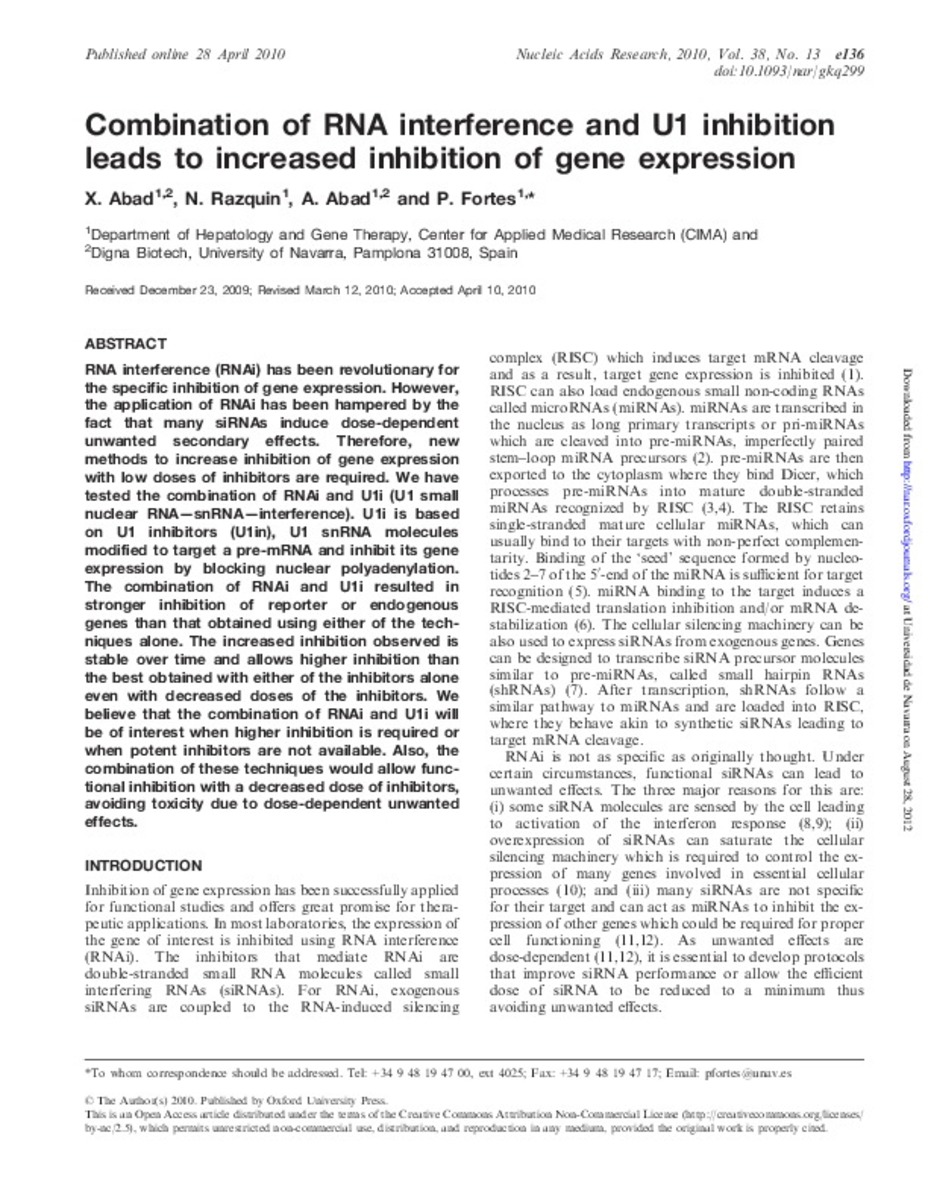Combination of RNA interference and U1 inhibition leads to increased inhibition of gene expression
Keywords:
RNA Interference
RNA, Small Nuclear/antagonists & inhibitors
Publisher:
Oxford University Press
Citation:
Abad X, Razquin N, Abad A, Fortes P. Combination of RNA interference and U1 inhibition leads to increased inhibition of gene expression. Nucleic Acids Res 2010 Jul;38(13):e136.
Statistics and impact
0 citas en

0 citas en

Items in Dadun are protected by copyright, with all rights reserved, unless otherwise indicated.







